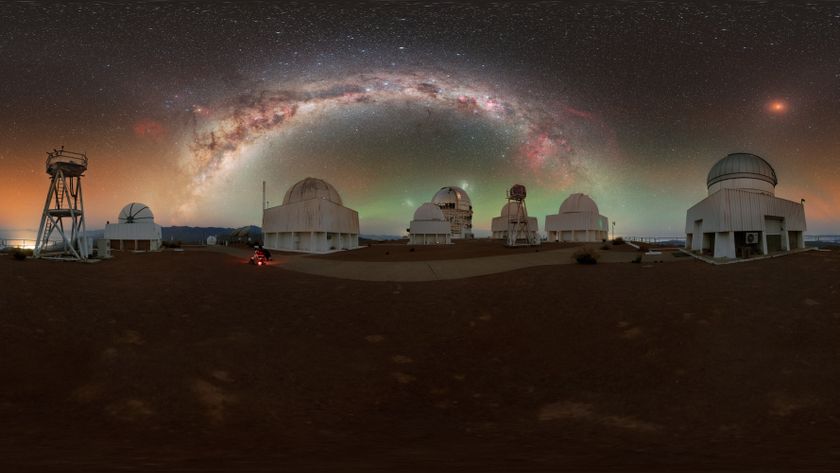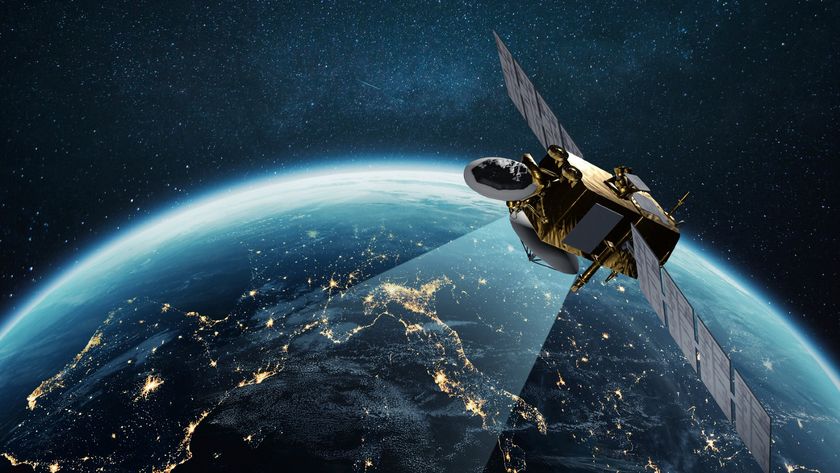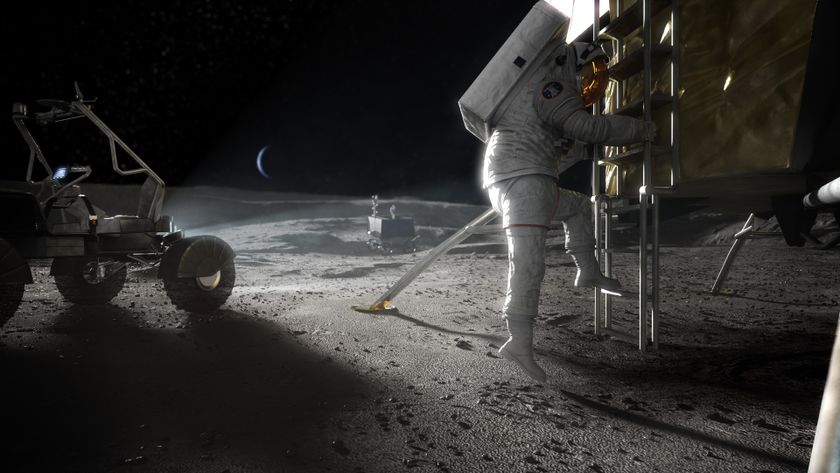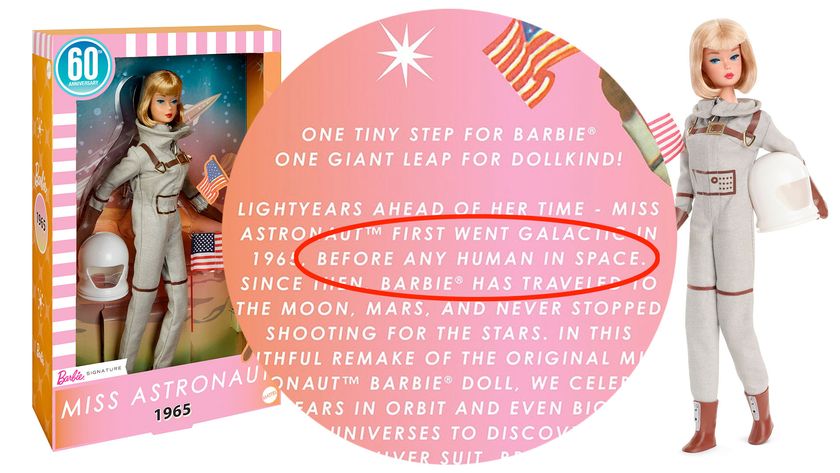Crab Nebula's Strange Pulsar Heart Slowly Going Off-Kilter
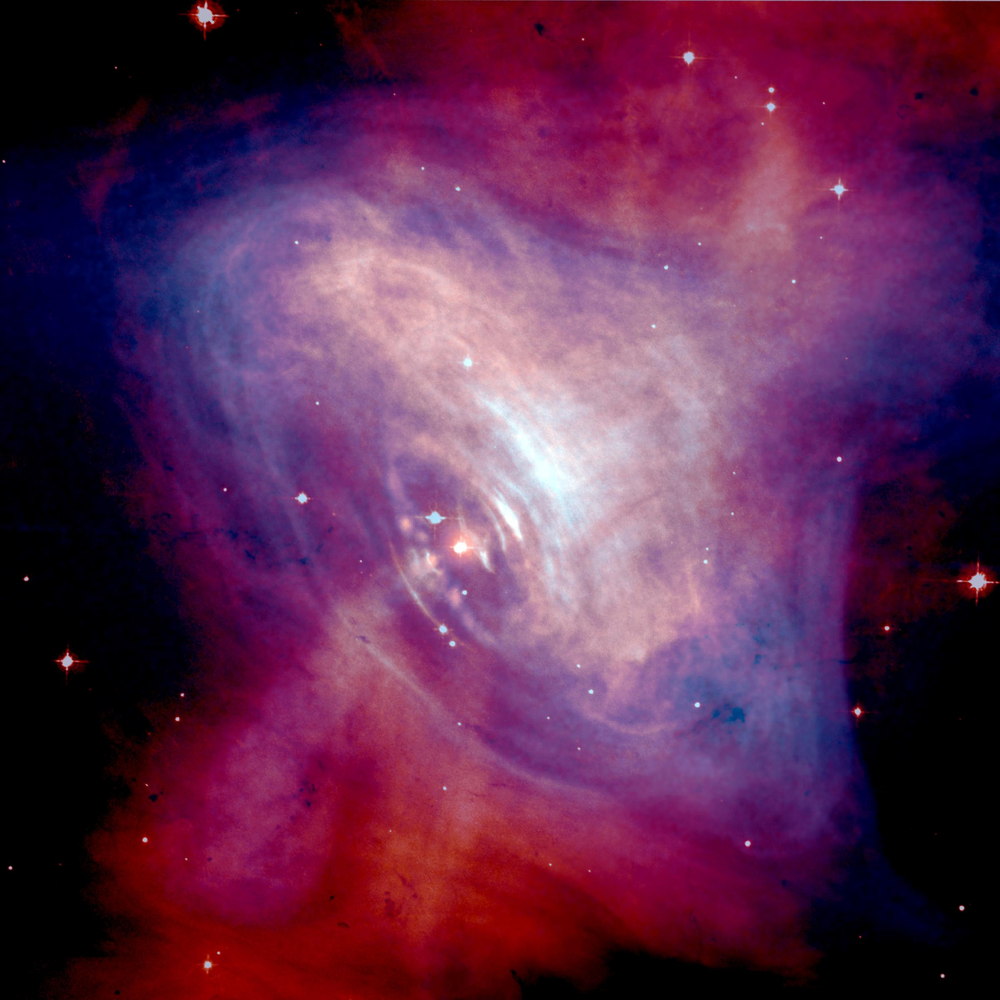
For the first time, astronomers have tracked the evolution of a pulsar's magnetic field over time, watching as it slowly tilts toward the dead star's equator. The new observations of the pulsar, located in the Crab Nebula, could offer clues to the long-standing problem of what slows pulsars' rotation.
"Most pulsars are millions or tens of millions of years old," said Andrew Lyne, emeritus professor of physics at the University of Manchester in the U.K., who led the study, which appears in the Nov. 1 issue of the journal Science. "So we don't expect to see significant changes. But we have been looking at this for a substantial portion of its lifetime, some 40 out of 1,000 years." The supernova that birthed the pulsar in the Crab Nebula occurred in A.D. 1054. Chinese and Arab astronomers both noted it.
"It's a result we've waited 30 years for," said Vasily Beskin, an astrophysicist at the Russian Academy of Sciences. Beskin, who was not involved in the study, and his colleagues predicted that pulsar magnetic fields would move to their equators in the 1980s. [Spectacular Photos of the Crab Nebula]
Fast and slow
A pulsar is the remains of a star whose core is at least 1.4 times as massive as the sun. When such stars reach the end of their lives, they can explode as supernovae. What's left is a neutron star, only a few miles across, with a large fraction of the star's original mass, which makes them incredibly dense.
Since stars are already rotating when they collapse, the neutron star spins on its axis spectacularly fast — just as ice skaters spin faster as they pull their arms in. At the same time, the neutron star develops an intense magnetic field and emits a beam of electromagnetic radiation along the north-south axis of that field. The magnetic field's axis and the neutron star's axis of rotation aren't perfectly aligned, so the beam of radiation sweeps across space, like the rotating lamp of a lighthouse — a pulsar.
If that beam happens to cross the path of the Earth, radio telescopes can pick up the signal. The Crab Nebula pulsar's signal flashes at about 30 times per second.
Get the Space.com Newsletter
Breaking space news, the latest updates on rocket launches, skywatching events and more!
The team from the University of Manchester and Jodrell Bank Observatory gathered 22 years' worth of data tracking the Crab pulsar's signals. The signal comes in two parts, a main pulse and a secondary one, called an interpulse. By measuring the polarization of the signal at two different frequencies, it's possible to calculate the angle between the axis of rotation and the beam of radiation. The researchers found that angle is increasing by 0.62 degrees per century.
Pulsar mysteries persist
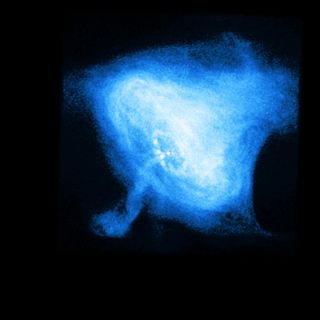
Seeing how quickly this happens might offer insights as to what happens in other neutron stars, Lyne said. One of the ongoing mysteries about pulsars is why they slow down as quickly as they do. The Crab pulsar, for example, is slowing by about 38 nanoseconds per day.
"If pulsars were just rotating dipoles, we'd expect the slowdown rate to be proportional to the cube of the … rotational frequency," Lyne told SPACE.com. "We call that the braking index, and it should be about three But most pulsars are smaller than three. About two-and-a-half or so." The slow movement of the magnetic field might be the answer.
"As the inclination angle gets larger, increasing the angle between two axes, it's almost exactly at the rate you need to cause the braking index to be two-and-a-half rather than three." It still isn't clear if that's the reason, however, because the internal structure of pulsars is still poorly understood.
The new data also gave other insights. "Normally, magnetic fields don't move through superconductors," Lyne said. "This magnetic field is moving, which suggests the superconductor in the neutron star is not perfect."
It's not likely that astronomers will run across another like the Crab pulsar, because to see one at all, the radio beam has to sweep across the Earth, and the odds of one being in precisely the right orientation are small. On top of that, the supernova that made the pulsar would have to be less than a few thousand years old, scientists say. There are several supernovas of the correct age, but they aren't all the right type to produce pulsars, and even if they were, they aren't pointed the right way.
It still isn't completely clear why pulsars' magnetic fields look as they do. "I wouldn't class it as being a simple problem," Lyne said. "We're trying to understand why it should evolve in this way."
You can follow SPACE.com on Twitter @Spacedotcom. We're also on Facebook & Google+.
Join our Space Forums to keep talking space on the latest missions, night sky and more! And if you have a news tip, correction or comment, let us know at: community@space.com.

Jesse Emspak is a freelance journalist who has contributed to several publications, including Space.com, Scientific American, New Scientist, Smithsonian.com and Undark. He focuses on physics and cool technologies but has been known to write about the odder stories of human health and science as it relates to culture. Jesse has a Master of Arts from the University of California, Berkeley School of Journalism, and a Bachelor of Arts from the University of Rochester. Jesse spent years covering finance and cut his teeth at local newspapers, working local politics and police beats. Jesse likes to stay active and holds a fourth degree black belt in Karate, which just means he now knows how much he has to learn and the importance of good teaching.





